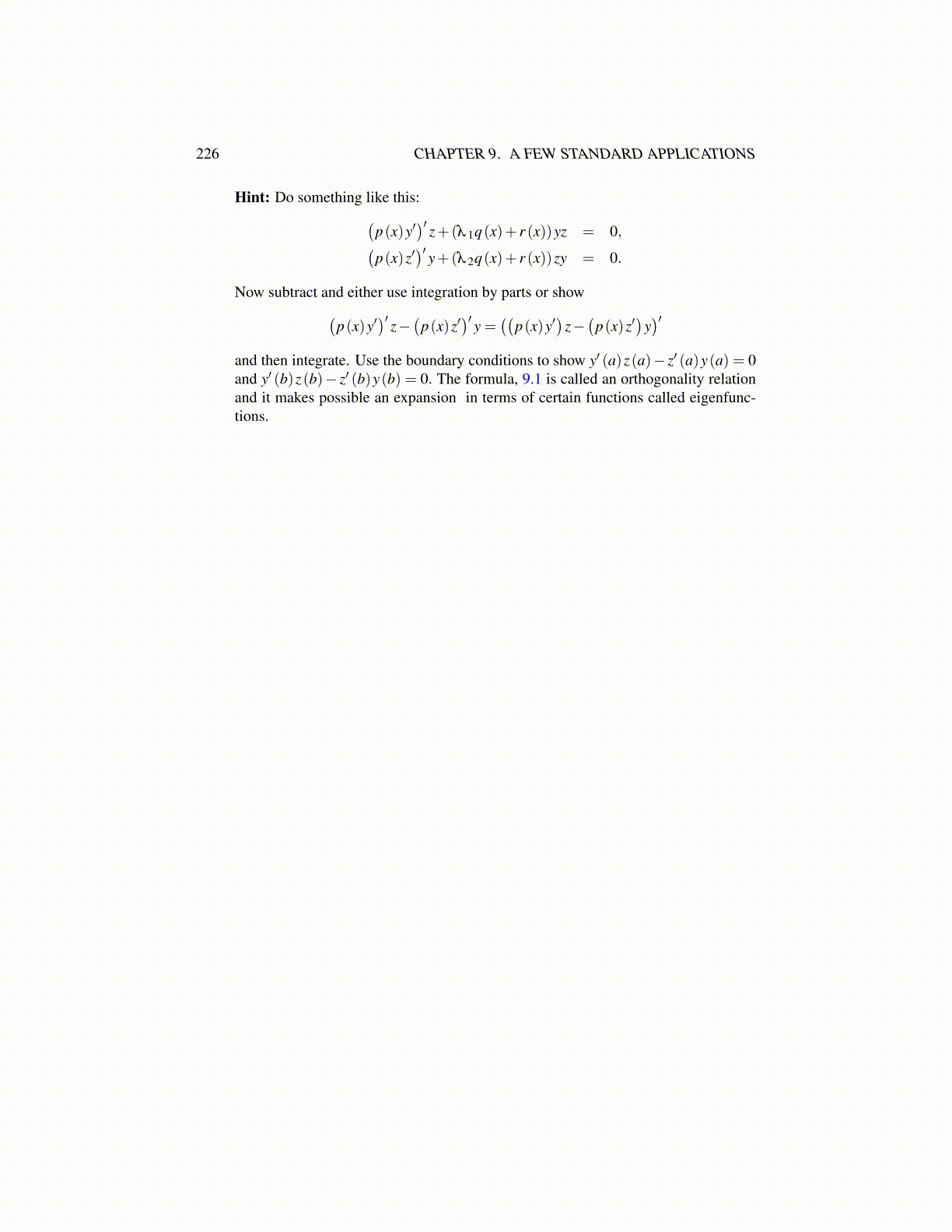
226 CHAPTER 9. A FEW STANDARD APPLICATIONS
Hint: Do something like this:(p(x)y′
)′ z+(λ 1q(x)+ r (x))yz = 0,(p(x)z′
)′ y+(λ 2q(x)+ r (x))zy = 0.
Now subtract and either use integration by parts or show(p(x)y′
)′ z− (p(x)z′)′ y = ((p(x)y′
)z−(
p(x)z′)
y)′
and then integrate. Use the boundary conditions to show y′ (a)z(a)− z′ (a)y(a) = 0and y′ (b)z(b)− z′ (b)y(b) = 0. The formula, 9.1 is called an orthogonality relationand it makes possible an expansion in terms of certain functions called eigenfunc-tions.
226CHAPTER 9. A FEW STANDARD APPLICATIONSHint: Do something like this:(p(a)y')'z+ Arg) +r@))yz = 0,(p(x)z')'y+ Aag(@x) +r) = 0.Now subtract and either use integration by parts or show(p(x)y’)'z- (p(x) zZ)'y = ((p(a)y’)z- (p@)Z)y)and then integrate. Use the boundary conditions to show y’ (a) z(a) —z (a) y(a) =0and y’ (b)z(b) —z’ (b) y(b) = 0. The formula, 9.1 is called an orthogonality relationand it makes possible an expansion in terms of certain functions called eigenfunc-tions./